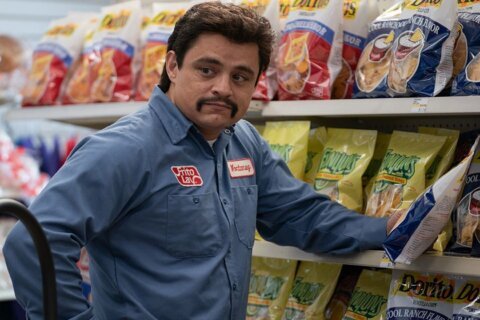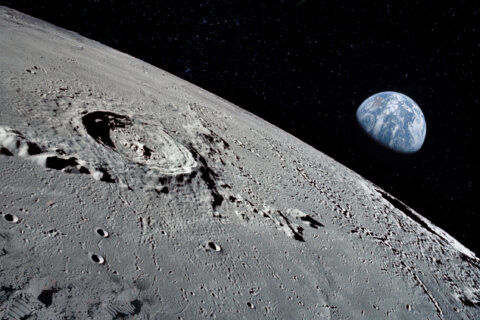WASHINGTON – Two star-studded movies from very different genres vie for moviegoers’ attention this weekend.
In one corner, we have Seth MacFarlane’s western spoof “A Million Ways to Die in the West.”
In the other, we have Disney’s alternate fairy-tale “Maleficent.”
Which one deserves your box office dollars?
Hint: I went in expecting one thing, and surprisingly got the other.
![]()
‘A Million Ways to Die in the West’
“A Million Ways to Die in the West” was the most anticipated comedy of the summer, courting both the old school fans of “Blazing Saddles” (1974) and “Cat Ballou” (1965), and new school fans of “Family Guy” (1999) and “Ted” (2012).
Seth MacFarlane directs himself as 1882 Arizona sheep farmer Albert Stark, whose lack of confidence pushes his girlfriend (Amanda Seyfried) into the arms of a mustached lover named Foy (Neil Patrick Harris). That confidence is boosted when he meets Anna (Charlize Theron), who’s as sweet as she is surgical with her marksmanship. There’s just one problem: Anna is unwillingly married to the sadistic Clinch (Liam Neeson), the deadliest gunslinger in the West.
The plot — and its many archetypal characters — is filled with comic potential, and MacFarlane throws every joke at the wall he can think of. Some of them stick with laugh-out-loud hilarity, while others miss with an eye roll. One can’t help but think the hit rate might have been higher if the movie were shorter.
MacFarlane may play a sheep farmer on screen, but he should have used his shears off screen. The two-hour film could have easily been 90 minutes, without losing a laugh. Several scenes are glaringly redundant. For instance, early in the film, MacFarlane lists all the dangers of the Old West — gunslingers, wild animals, disease, Indians, etc. The rapid-fire delivery works like a modern-day Edward G. Robinson, the only problem is he follows it with the same “danger list” in the very next scene. Shouldn’t a rewrite have caught this?
MacFarlane also plays the “potty humor” card too often. Don’t get me wrong. A good “fart joke” will forever be funny. But it has to be done in moderation, like the campfire scene in “Blazing Saddles” (1974), the laxative date in “Dumb and Dumber” (1994), the family dinner table in “The Nutty Professor” (1996) or the bathroom stall in “Austin Powers: International Man of Mystery” (1997). Rather than gross us out, such scenes leave us wondering, “Who does Number 2 work for?”
The “trimming” would have also helped the movie trailers, which give away far too many of the film’s best gags. The running joke of the title — that there are literally a million ways to die in the West — relies on sudden shock gags that are diluted by us having already seen them in the previews. I’ll bet if MacFarlane had a Flux Capacitor, he’d go back in time and keep more of his best gags a secret.
All that said, it’s hard not to laugh at many scenes because the cast is having such a blast. Neil Patrick Harris steals the show with his giddy laugh and kinky mustache fetishes. You’d be hard-pressed to find better physical comedy than when he reaches for a stranger’s hat, only to be routinely blocked like a Three Stooges hand on the forehead.
Sarah Silverman (“School of Rock”) and Giovanni Ribisi (“Friends”) are a hilarious duo of loose prostitute and religious virgin, mining comic gold from the fact that she prostitutes her body for whorehouse customers by day, then locks it up for her soul mate by night. Just another day on the job.
Liam Neeson (“Schindler’s List”) channels Jack Palance (“Shane”), Ian MacDonald (“High Noon”) and Lee Marvin (“The Man Who Shot Liberty Valance”) as the villainous gunslinger, who promises to count to three, then shoots on “two.” Still, the glue of the story is the contrasting love interests, Seyfried as the superficial frontier lady versus Theron as a sort of Angie Dickinson (“Rio Bravo”) who can give it right back to the male lead.
In the end, there’s just enough here to please diehard “Family Guy” fans looking for a few outrageous laughs by a talented cast, but there’s not enough to please us diehard Western fans. As you stare at the majesty of Monument Valley, made famous by so many John Ford masterpieces, you’ll miss the genius of Mel Brooks, who spoofed a genre he adores (his favorite flick is “Treasure of the Sierra Madre”), compared to MacFarlane, who seems to despise it to the core.
★ ★ 1/2
![]()
‘Maleficent’
While Charlize Theron mines comedy in “A Million Ways to Die in the West,” she mined terror as the Evil Queen in “Snow White & The Huntsman” (2012), which arrived the same year as Julia Roberts’ “Mirror Mirror” (2012). Now, the trend continues as Angelina Jolie takes on Disney’s all-time scariest villain in “Maleficent,” the horny “Sleeping Beauty” succubus that’s horrified children since her Brothers Grimm creation and her 1959 Disney revival. Fun fact: Eleanor Audley voiced both the Wicked Stepmother in “Cinderella” and Maleficent in “Sleeping Beauty.”
Academics will one day digest the psychological impact of a generation raised on inverted fairy tales, where we routinely hear the villain’s side of the story. Millennials have been raised on storybooks like “The True Story of the Three Little Pigs,” Broadway plays like “Wicked” and movies like “Maleficent,” where the lines between the proverbial good guys and bad guys are blurred. Is this confusing kids? Or is it preparing them for the realistic ambiguity of life? Either way, there’s no question that our children’s entertainment is becoming more in step with the anti-heroes of our adult entertainment.
In this telling of the “Sleeping Beauty” tale, we learn how Maleficent (Jolie) met her crow sidekick Diaval (Sam Riley) and had her heart broken by future King Stefan (Sharlto Copley), a scorned lover backstory similar to Mila Kunis’ Wicked Witch in “Oz: The Great and Powerful” (2013).
We also see her place her famous spell on Princess Aurora (Elle Fanning, sister of Dakota Fanning), cursing her to prick her finger on a spinning wheel on her 16th birthday and fall into an eternal sleep, broken only by “true love’s kiss.”
Screenwriter Linda Woolverton deserves credit for “spinning” this spinning wheel story on its head, introducing clever backstory setups and twisted payoffs with feminist commentary similar to “Frozen” (2013). These twists are gratifying in nature, but predictable in a presentation, a flaw that could have been masked by giving more screentime to Prince Philip (Brenton Thwaites) and the trio of fairies: Knotgrass (Imelda Staunton), Flittle (Lesley Manville) and Thistlewit (Juno Temple).
Either way, Woolverton’s career speaks for itself, having co-written some of the greatest Disney films ever made, from “Beauty and the Beast” (1991) to “The Lion King” (1994). She was an obvious pick to adapt an animated Disney favorite into a live-action flick, having adapted Tim Burton’s remake of “Alice in Wonderland” (2010), where she worked with Art Director Robert Stromberg, who now makes his directorial debut with “Maleficent.”
As you might expect from a two-time Oscar-winning Art Director (“Avatar,” “Alice in Wonderland”), Stromberg has a wild visual imagination. Much of “Maleficent” is magnificent to look at, from lush waterfalls to dark forests, but viewers may find themselves dizzy from all the 3D creatures in Act One. A little less CGI and a little more Lana Del Rey would have been just the right balance.
Still, Stromberg nails it with the most important element: his title character, which features a collection of rigid horns, sharp wingtips and extra-angular additions to Jolie’s world famous cheekbones.
Let’s face it. This is the role Jolie was born to play. Whether you love or hate the movie, it’s worth the price of admission alone just to see Jolie play this character for all its delicious glory, mining unstoppable laughter and surprising sympathy from a character so entrenched in horror. Jolie takes an otherwise mediocre affair and wills it into watchability. Who needs “Adele Dazeem” when you have an actress this wickedly talented?
As Del Rey’s cover of “Once Upon a Dream” drifts over the end credits, its lyrics will articulate the audience experience: diehard Disney eyes, familiar a gleam, exploding the notion that derivative visions are seldom all they seem.
★ ★ ★
The above rating is based on a 4-star scale. See where this film ranks in Jason’s Fraley Film Guide. Follow WTOP Film Critic Jason Fraley on Twitter @JFrayWTOP, read his blog The Film Spectrum, listen Friday mornings on 103.5 FM and see a full list of his stories on our “Fraley on Film” page.
Follow @WTOP and WTOP Entertainment on Twitter and WTOP on Facebook.








